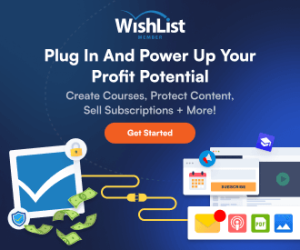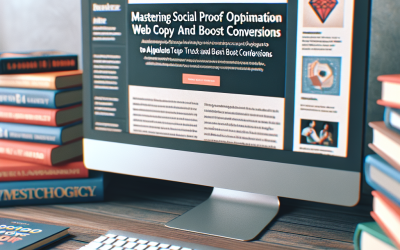Transform Your Email Campaigns with Proven Techniques for Effective Copywriting That Converts
Understanding Effective Copywriting for Email Campaigns
In my experience with effective copywriting for email campaigns, I’ve learned that the foundation lies in understanding your audience deeply. When I first started experimenting with email marketing, I realized that no matter how beautiful my design was, if the copy didn’t resonate, my campaigns fell flat. That’s when I began to focus on mastering effective copywriting techniques that truly connect and convert.
From what I’ve researched and practiced, effective copywriting for email campaigns requires a blend of psychology, clarity, and storytelling. I want to share what I’ve learned about crafting messages that not only capture attention but also inspire action. Whether you’re reaching out to new leads or nurturing existing customers, I believe these techniques will elevate your email game significantly.
Understanding Your Audience’s Needs
One of the first lessons I discovered is that effective copywriting for email campaigns begins with understanding your audience’s pain points, desires, and motivations. I’ve found that when I put myself in my subscribers’ shoes, my messaging becomes more authentic and compelling. I recommend conducting surveys or analyzing engagement data to better understand what truly matters to your readers.
In my experience, personalized emails that speak directly to the recipient’s needs outperform generic messages every time. When I tailor my copy to address specific challenges, I see higher open and click-through rates. Effective copywriting for email campaigns is all about making your audience feel seen and understood, which naturally increases conversions.
Crafting Your Unique Value Proposition
From what I’ve learned, clearly articulating your value proposition is crucial in effective copywriting for email campaigns. I’ve discovered that my emails perform better when I focus on how my offer benefits the reader, not just the features. I recommend always asking yourself: What’s in it for my subscriber?
I’ve found that concise, benefit-driven language creates a sense of urgency and relevance. For example, instead of saying “We offer discounts,” I prefer saying “Save 20% on your next purchase — exclusive for our email subscribers.” This approach makes the message more persuasive and aligned with effective copywriting for email campaigns principles.
Crafting Compelling Subject Lines
The first impression in any email is the subject line, and in my experience, it’s where effective copywriting for email campaigns can make or break your open rates. When I started paying attention to my subject lines, I realized that they need to be concise, intriguing, and promise value. I want to share some techniques I personally use to craft subject lines that grab attention instantly.
Using Emotional Triggers
I’ve discovered that leveraging emotions is a powerful way to increase engagement. Words that evoke curiosity, urgency, or excitement tend to perform well. For instance, I often include words like “Exclusive,” “Limited,” or “Discover” to spark interest. From my experience, effective copywriting for email campaigns often hinges on tapping into the emotional mindset of my audience.
I recommend experimenting with different emotional triggers and monitoring your results. Over time, I’ve learned to craft subject lines that speak directly to my readers’ aspirations and fears, which significantly boosts open rates.
Keeping It Short and Specific
In my journey with effective copywriting for email campaigns, I’ve found that shorter subject lines tend to perform better, especially on mobile devices. I always aim for 6-10 words that clearly convey the email’s benefit.
From what I’ve seen, specificity in your subject line — like mentioning a discount percentage or a deadline — increases the perceived value. I recommend avoiding vague phrases and instead focusing on delivering a clear, compelling reason to open the email. This approach has helped me improve my open rates consistently.
Writing Persuasive Email Body Content
Once I’ve mastered the art of grabbing attention with my subject line, I focus intensely on the email body. In my experience, effective copywriting for email campaigns in the body revolves around clarity, storytelling, and a strong call-to-action (CTA).
Using Clear and Concise Language
I’ve discovered that long-winded paragraphs tend to lose readers’ interest. When I write my email content, I always aim for short sentences and straightforward language. I want my message to be easily digestible. From what I’ve learned, effective copywriting for email campaigns hinges on making the message scannable — using bullet points, bold text, and clear headlines.
I recommend reviewing your emails to eliminate unnecessary words and focus on the core message. When I do this, my engagement metrics improve, and my audience responds more positively.
Storytelling and Emotional Connection
From my experience, stories create emotional bonds that motivate action. I try to incorporate personal anecdotes or customer success stories into my emails. This makes my messages feel authentic and relatable, which I believe is a key to effective copywriting for email campaigns.
I’ve found that a well-told story can turn a simple offer into an emotionally compelling reason to act. I recommend always thinking about how your story aligns with your audience’s values and desires.
Optimizing for Engagement and Conversions
In my journey to improve effective copywriting for email campaigns, I’ve realized that optimization doesn’t end with good writing. It’s also about testing, analyzing, and refining your approach.
A/B Testing Your Copy
I recommend running A/B tests on different headlines, email copy, and CTAs to see what resonates best. When I started doing this, I learned that small changes could significantly impact engagement. From my experience, effective copywriting for email campaigns is a dynamic process that requires continuous improvement.
I suggest keeping detailed records of your tests and results to identify patterns. Over time, this data-driven approach has helped me craft more effective emails that convert better.
Personalization and Segmentation
Personalization has been a game-changer in my email marketing efforts. I’ve found that segmenting my list based on behavior, preferences, or demographics allows me to tailor my copy more precisely. I recommend using dynamic content and personalized greetings to make your emails feel more relevant.
From what I’ve experienced, effective copywriting for email campaigns is amplified when combined with targeted segmentation. It increases open rates, click-throughs, and ultimately, conversions.
References and Resources
Throughout my research on effective copywriting for email campaigns, I’ve found these resources incredibly valuable. I recommend checking them out for additional insights:
Authoritative Sources on effective copywriting for email campaigns
-
Copyblogger: Email Marketing Copywriting Tips
Copyblogger.comThis resource offers practical advice on crafting compelling email copy that drives engagement, including real-world examples and proven techniques in effective copywriting for email campaigns.
-
Mailchimp Guides
Mailchimp.comA comprehensive collection of email marketing strategies and effective copywriting tips to enhance your campaigns and improve conversions.
-
Neil Patel: Email Copywriting Strategies
NeilPatel.comNeil Patel shares insights on persuasive email copywriting techniques that boost open rates and conversions, rooted in data-driven analysis.
-
HubSpot Resources on Email Marketing
HubSpot.comOffers extensive guides on effective copywriting for email campaigns, including templates, best practices, and case studies.
-
Content Marketing Institute
ContentMarketingInstitute.comProvides insights on storytelling and persuasive writing, essential components of effective copywriting for email campaigns.
-
Adobe: Email Copywriting Tips
Adobe.comFocuses on design and copy synergy, helping writers craft visually appealing and persuasive emails for better results.
-
B2B Marketing Resources
B2BMarketing.netProvides research-backed strategies and case studies that demonstrate effective copywriting techniques for email campaigns.
-
MarketingProfs
MarketingProfs.comOffers courses, articles, and webinars on various aspects of effective copywriting for email campaigns, including testing and personalization.
Frequently Asked Questions
Question 1: What is the most important aspect of effective copywriting for email campaigns?
In my experience, the most important aspect is understanding your audience. When I focus on their needs and motivations, my copy becomes more relevant and persuasive. Effective copywriting for email campaigns hinges on creating messages that resonate personally, prompting readers to take action.
Question 2: How can I improve my email open rates through copywriting?
I recommend crafting compelling subject lines that evoke curiosity or urgency, as I’ve found they significantly increase open rates. Additionally, aligning your email content with what your audience cares about ensures they find value in opening and reading your message.
Question 3: What role does storytelling play in effective copywriting for email campaigns?
Storytelling is one of my favorite techniques. It creates an emotional connection that motivates action. I often incorporate personal stories or customer success examples in my emails, which makes my messages more relatable and persuasive, boosting conversions.
Question 4: How do I test and optimize my email copy?
I believe A/B testing is essential. I test different headlines, CTAs, and messaging styles to see what works best. Tracking these results helps me refine my effective copywriting for email campaigns over time, leading to better engagement and higher conversions.
Question 5: Can personalization improve my email campaign results?
Absolutely. In my experience, personalized emails that address the recipient’s specific interests or behaviors tend to outperform generic messages. Personalization makes your audience feel valued, which enhances engagement and increases the likelihood of conversions.
Conclusion
In conclusion, my research on effective copywriting for email campaigns has shown that success largely depends on understanding your audience, crafting compelling messages, and continually optimizing your approach. I hope this guide helps you apply these proven techniques to transform your email marketing results. Based on my experience, investing in effective copywriting for email campaigns is one of the most impactful ways to boost your engagement, build relationships, and drive conversions. Remember, great copy is the bridge between your message and your audience’s action, so make every word count!
Find out more information about “effective copywriting for email campaigns”
Search for more resources and information:










